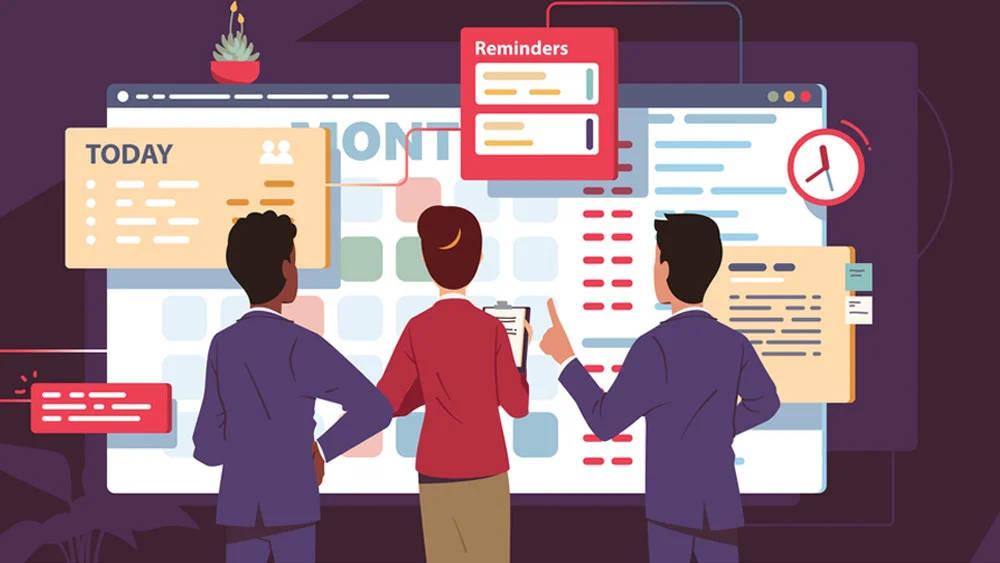In our fast-paced, hyper-connected world, the weight of our responsibilities can feel overwhelming. A chaotic collection of to-do lists, sticky notes, forgotten emails, and fragmented thoughts can turn even the most organized person into a whirlwind of stress and anxiety. The constant mental load of remembering everything we need to do—both at work and in our personal lives—is exhausting. It leads to missed deadlines, forgotten appointments, and a nagging sense of being perpetually behind. The problem isn’t a lack of tasks; it’s a lack of a clear, reliable system to manage them. The solution is not to work harder, but to work smarter by simplifying how you manage your tasks. This article will go beyond just recommending an app; it will guide you through building a foundational system that brings order to the chaos, reduces mental friction, and empowers you to achieve more with less effort.
Why “Simplified” Task Management is a Game-Changer

Before we dive into the “how,” it’s crucial to understand the “why.” Traditional task management often fails because it’s either too complex or too rigid. People create elaborate spreadsheets they never update or rely on their memory, which is a notoriously unreliable tool. A simplified system, on the other hand, is built on a few core principles designed to reduce cognitive load and increase efficiency. When your tasks are captured, clarified, and prioritized, you free up your brain’s processing power from the burden of remembering what to do and allow it to focus on the actual work. This shift from a state of reactive chaos to one of proactive, intentional action is what truly defines a simplified approach.
It’s about creating a single source of truth for all your commitments. Instead of your brain trying to hold onto a dozen different things, it can relax, knowing that everything is safely and accurately recorded in your system. This peace of mind is invaluable, leading to lower stress levels, better sleep, and a greater sense of control over your day.
The Foundational Principles of an Effective System
Every great task management system, whether it’s a simple notebook or a sophisticated piece of software, is built on a few non-negotiable principles. Ignoring these leads to systems that are difficult to maintain and ultimately abandoned.
A. Capture Everything. Your system must have a “catch-all” function. Whenever a new idea, task, or commitment comes to mind, you must have a quick and easy way to jot it down. This is the first and most critical step. The goal is to get it out of your head and into a trusted system.
B. Clarify and Categorize. A raw list of tasks is still just a chaotic list. The next step is to process the captured items. What is this item? Is it a task, a project, a reference note? Does it require immediate action? By clarifying what each item is, you can then categorize it logically—by project, by person, or by the context in which you need to complete it (e.g., at home, on the computer, while making a phone call).
C. Prioritize Ruthlessly. Not all tasks are created equal. An effective system forces you to decide what is truly important and what is simply urgent or even irrelevant. This prevents you from spending your time on low-value activities and ensures you are always working on what matters most.
D. Review and Refine. No system is perfect, and your life is constantly changing. A simplified system is a living document that requires regular review. A weekly or daily review is essential to clear the backlog, reassess priorities, and ensure your system is still serving your needs.
Choosing the Right Tool for Your Workflow
The sheer number of task management tools available can be a source of overwhelm in itself. The key is to select a tool that aligns with your personality, your workflow, and your professional needs. The best tool is not the one with the most features, but the one you will actually use.
A. The Digital Minimalist: Simple List Apps. These tools, often found on your phone or built into your email client, are perfect for individuals who need a no-frills approach. They focus on quick capture and simple checklists. Their strength lies in their accessibility and lack of complexity, making them a low-friction way to get started. They are ideal for managing personal errands or basic daily to-dos.
B. The Visual Planner: Kanban Boards. The Kanban method, popularized by apps like Trello and Asana, is a visual system that organizes tasks into columns, typically “To Do,” “In Progress,” and “Done.” This visual workflow provides an instant, at-a-glance overview of your progress and is particularly effective for managing projects with multiple steps or for team collaboration.
C. The All-in-One Power User: Comprehensive Platforms. These platforms, such as Notion, Todoist, and ClickUp, go far beyond simple lists. They integrate task management with note-taking, project planning, and long-term goal tracking. They are highly customizable and can be tailored to fit almost any workflow, making them the preferred choice for project managers, freelancers, and anyone who needs a single hub for their entire life.
D. The Analog Enthusiast: Physical Notebooks. For many, the simple act of writing a task down with a pen and paper is a powerful ritual. Physical notebooks, bullet journals, and planners offer a tactile experience that digital tools cannot replicate. They are distraction-free and force you to be more intentional about what you write down. The famous Getting Things Done (GTD) method, for example, works beautifully with a simple notebook.
The 4-Step System for Simplified Task Management

Now that you understand the principles and the types of tools, let’s build a practical, 4-step system that you can implement today.
Step 1: The Brain Dump
This is your first act of mental liberation. Find a quiet moment, grab your chosen tool (a notebook or a blank digital page), and write down every single task, idea, and commitment that is currently swirling in your head. Do not organize, categorize, or prioritize during this step. Just get it all out. Include everything: from “buy milk” to “plan for next quarter’s strategy” to “call my mom.” This process, known as a mind sweep, is crucial for clearing your mental cache and allowing you to see the true scope of your responsibilities.
Step 2: Organize and Assign
With your brain dump complete, it’s time to process the list. Go through each item one by one and ask yourself three questions:
- Is it actionable? If it’s an idea or a piece of information, what is the very next action you need to take on it?
- What is the project? If it’s a sub-task, what larger project does it belong to?
- What is the context? Where or when do you need to do this? (e.g., at work, at home, on the phone).
Once you’ve answered these questions, move each item to its proper place in your system. For example, all work-related tasks go into a “Work” project list, all personal errands go into a “Personal” list, and so on. This step transforms your chaotic list into a structured, organized system.
Step 3: Prioritize and Plan Your Day
Every morning, before you dive into your work, review your organized list and select your most important tasks for the day. This is where ruthless prioritization comes in. Use one of these simple, powerful frameworks:
- The Eisenhower Matrix: Categorize tasks based on Urgency and Importance. Focus your day on tasks that are Important but Not Urgent.
- The ABCDE Method: Assign a letter to each task: A for high-priority tasks you must do, B for tasks you should do, C for tasks that would be nice to do, D for tasks to delegate, and E for tasks to eliminate.
- Eat the Frog: Tackle your single most difficult or important task first thing in the morning. Completing this “frog” builds momentum and ensures that even if the rest of your day goes haywire, you’ve already accomplished a major win.
By planning your day in advance, you eliminate decision fatigue and start each morning with a clear, intentional plan of action.
Step 4: The Weekly Review
This is the most powerful habit you can build. Set aside 30-60 minutes every week to review your entire system. During this time, you should:
- Empty your inbox and any “capture” lists.
- Review your calendar for the past week and the week ahead.
- Check the status of all your projects.
- Update your lists, add new tasks, and delete old ones.
- Review your long-term goals and ensure your tasks are still aligned with them.
The weekly review ensures that your system stays fresh, relevant, and in sync with your life, preventing it from becoming a stagnant graveyard of forgotten tasks.
Common Pitfalls and How to Avoid Them
Even with a perfect system, it’s easy to fall into old habits. Here are a few common pitfalls to watch out for:
A. Over-engineering the System. Don’t spend more time building the system than you do working. Start with a simple tool and a simple process, and only add complexity when a new need arises.
B. Confusing a Task List with a Project Plan. A task list is a collection of actions. A project plan is a series of milestones. Breaking down large projects into small, actionable tasks is critical for making progress.
C. Relying on Memory. If it’s not in your system, it doesn’t exist. Get into the habit of writing everything down immediately to free up your mental energy.
D. Not Reviewing the List Daily. Your daily plan is your roadmap. A few minutes each morning to review and prioritize your tasks will set you up for success.
Conclusion
The pursuit of task management is not about finding the perfect app or achieving an impossible state of perfect organization. It’s about building a simple, reliable system that serves as a trusted external brain, freeing you from the constant anxiety of remembering and allowing you to focus on the work itself. By embracing the principles of capturing, clarifying, prioritizing, and reviewing, you can transform a chaotic collection of to-dos into a streamlined, powerful engine for productivity.
The digital tools of today have revolutionized what’s possible, providing features from simple digital lists to complex project management hubs. But remember, the tool is only as good as the system behind it. The true simplification comes from a change in mindset—a commitment to a structured workflow that provides a clear roadmap for your day, your week, and your life. This shift from a reactive to a proactive state is not just a productivity hack; it’s a path to reducing stress, reclaiming your time, and finding a greater sense of purpose in your daily actions. By simplifying your task management, you’re not just getting more done; you’re living a more intentional, focused, and ultimately more fulfilling life. The key to conquering the overwhelm is not to add more to your plate, but to systematically and simply manage what’s already there.












